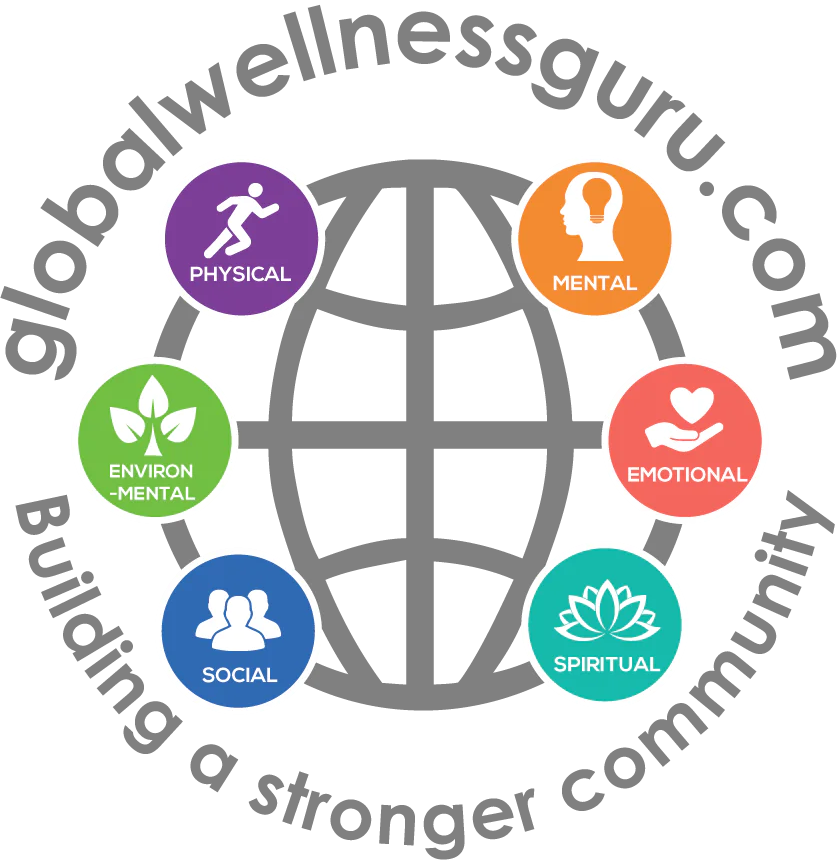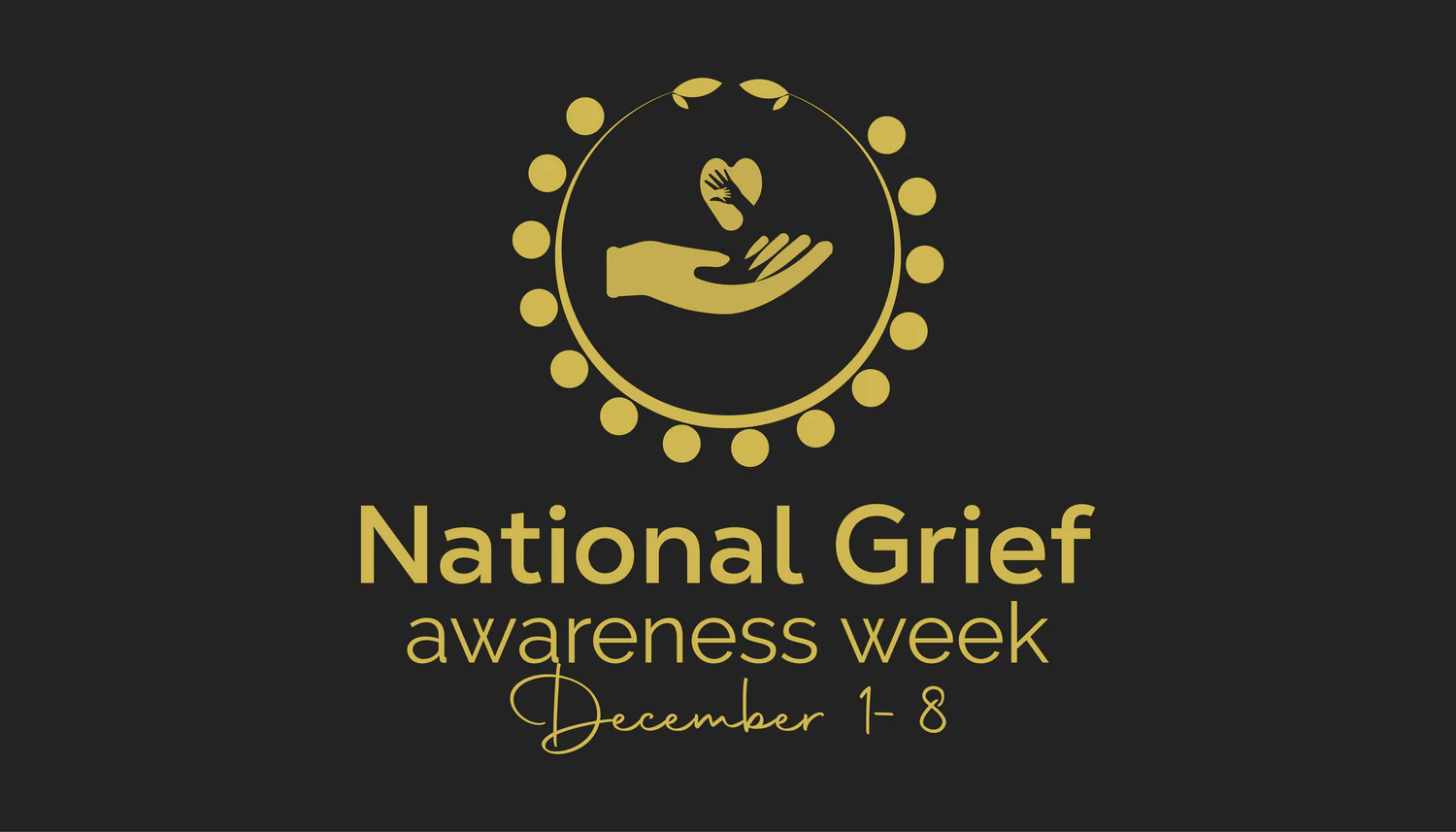Breaking the Silence: National Grief Awareness Week Unveiled Physical Fitness
The first week of December marks National Grief Awareness Week, an opportunity to come together and talk openly about grief. Losing a loved one can be profoundly painful and often lonely. This week is a chance to raise awareness, provide support, and remind grieving people everywhere that they are not alone.
What is Grief?
Grief is a natural response to loss. It is the emotional suffering we feel when something or someone we love is taken away[1]. The more significant the loss, the more intense the grief tends to be. We grieve because we love, and love always leaves a memory behind once it’s gone.
Common losses that cause grief include[1]:
- Death of a family member or close friend
- End of a relationship or divorce
- Losing your independence through disability or illness
- Loss of a job
- Loss of safety after trauma
- Loss of trust after betrayal
Grief affects each person differently. There is no “right” or “wrong” way to grieve. The grieving process is highly individual and reflects the singular nature of each relationship and person we lose[1]. Some people experience intense emotions like extreme sadness, anger, guilt, anxiety, or loneliness after a loss. Others become preoccupied with thoughts of the person who died and replay memories in their minds.
Many have physiological responses like trouble sleeping, changes in appetite, lack of energy, or physical problems. A grieving person may cycle rapidly between difficult emotions or feel numb.
Grieving is not just sadness – it can manifest in many ways. What’s important is that we give people adequate time and space to grieve loss on their own terms, rather than expecting them to “get over it” by an arbitrary timeline.

“Grief is the price we pay for love.” – Colin Murray Parkes
Why Do We Need Grief Awareness Physical Fitness?
Though grief is normal and nearly everyone grieves after a major loss, people often feel isolated in their grief. Many reports that others seem uncomfortable hearing about their grief and
encourage them to “move on”. Some worry that openly expressing grief will burden others[2]. The discomfort people often feel around discussing grief tends to discourage grieving individuals from opening up. This causes many to grieve quietly and alone.
However, grieving alone can be profoundly damaging[2]:
- It removes crucial support networks when people are most vulnerable.
- Bottling up emotions usually causes them to resurface later as anxiety, depression, PTSD symptoms, or health problems.
- It leaves individuals unequipped to help themselves or others through grief in the future.
- Delaying or repressing grief can stall the adaptation process and integration of loss.
Bringing grief into the light helps lessen the isolation and confusion grieving individuals often feel. It reminds us to practice compassion, lend support, and normalize a process that each of us will go through at some point.
We need a grief-informed society that recognizes grief as the necessary process it is. Greater awareness helps foster such a culture, while also providing education on healthy coping mechanisms and reminding us to extend grace, care, and understanding to both grieving individuals and ourselves[2].
Common Myths and Misconceptions About Grief
Unfortunately, our cultural understanding of grief tends to be limited. Often well-intentioned people present myths or misconceptions about the grieving process that can be harmful. Some common examples include[3][4][5]:
Myth: Grief Has an Expiration Date
Statements like “It’s been 6 months already” or questions like “Aren’t you over that yet?” reveal the myth that grief neatly resolves by an appointed deadline.
In reality, grief has no timeline and does not end predictably. People integrate losses at dramatically different paces tied to factors like:
- The nature of their relationship to what’s lost
- The type of loss
- Their perception of how preventable the loss was
- The timing of the loss
- Their personal coping abilities and support systems
- Concurrent stressors that drain their emotional bandwidth
We all need to adapt to loss in our own time without external pressure to “move on”.
Myth: Grief Progresses Through Set Stages
Pop culture depictions often show grieving individuals moving through predictable emotional stages, like denial, anger, bargaining, depression, and acceptance. While these may present at times, no actual research supports universal emotional stages of grief that people pass through orderly.
Insisting someone must move through specific stages risks crowding their process with external rules rather than letting it unfold organically as needed.
Myth: Tears and Expressions of Distress Are Weak
Some incorrectly assume that visibly crying or expressing sorrow shows embarrassing weakness rather than a healthy processing of emotion. Tears serve biological and emotional functions crucial for integrating loss. Repressing them raises risks of issues like depression or anxiety later on. We should allow ourselves and others full freedom to cry.
Myth: You Can Replace the Loss With Something Else
The idea that we can simply replace lost people or things reveals the myth that all losses are interchangeable – if your spouse dies you can marry someone else, if your dog dies you can quickly get a new puppy, if your house burns down you can move into another one just like it.
In reality, all losses are unique and cannot be replaced or substituted with something of equal value. New people, pets, or houses form distinctly different relationships and memories. We must make space first to process the original singular loss before building something new.
Myth: Grief Means Feeling Miserable Every Second
Some believe if you have respites from active grieving it signifies you didn’t care as much about who or what you lost. Movies often portray grief as 24/7 emotional agony.
In truth, grieving individuals move in and out of grief, perhaps crying intensely one minute but then laughing the next. Our minds self-regulate emotions to avoid constant overwhelm. Waves or bursts of grief between periods of calm constitute healthy adaptation. Insisting people remain miserable intensifies suffering.

Why We Grieve as We Do: Attachment Theory
An established psychological model called Attachment Theory sheds light on the nature of grief[6]. It provides a framework for understanding why we grieve losses so deeply, particularly of close loved ones. Though first conceived to explain infant bonding patterns, Attachment Theory now extends broadly to human emotion regulation throughout life.
The Biology Behind Attachment
When we feel safest, our body activates the parasympathetic nervous system to prompt social engagement and bonding. This same biology originates in infancy when babies bond to caretakers as their primary “safe haven”[6][7]. Babies separated from caretakers become alarmed until reunited, activating a region of their brain called the amygdala to elicit distress cries that signal danger loudly to caretakers. Once reunited, the baby’s bodily stress response calms.
This attachment relationship becomes coded in the infant’s brain as a template for how all later relationships feel emotionally[6][7]. As we mature, we establish selective preferences and bonding for specific individuals who take on caretaker roles. Losing them ignites the same distress signals and bodily reactions babies experience when separated from primary caretakers. We effectively experience relationship loss as a danger on a biological level.
Understanding this science reminds us grief runs deeply through our body and psyche. We hurt intensely after loss because our brain perceives it as a threat when attachment relationships end.
Common Attachment Styles
Researchers classify attachment patterns that commonly develop in infancy but continue influencing relationships throughout life[6][7]. Our attachment style imperfectly shapes how we handle the loss of loved ones. More secure styles with healthy bonding abilities typically adapt better. However, even secure individuals deeply feel the pain of lost attachment figures like parents, children, life partners, or best friends.
No single attachment style perfectly predicts grief responses – even the most secure feel profound loss. But styles like Preoccupied and Fearful often indicate greater emotional reactivity and trauma during the grieving journey.
Secure
- Comfortable with intimacy & independence
- Can healthfully process relationship loss with support
Avoidant
- Uncomfortable with emotional closeness
- Distract self from grief rather than processing emotions
Anxious/Preoccupied
- Require high contact and reassurance
- Experience heightened trauma and volatility with loss
Disorganized/Fearful
- Unresolved trauma hampers bonding ability
- Loss often retraumatizes and overwhelms coping abilities
The takeaway remains that human relationships intrinsically help regulate our nervous systems, causing deep pain when they disappear. All attachment styles feel this suffering when grieving. Secure styles adapt easier while insecure styles show higher instability, distress, or numbness during loss.
The Dual Process Model: Navigating Grief’s Rhythms
Given grief’s uneven rhythms, therapists often reference an adaptive alternating cycle called the Dual Process Model when explaining grieving patterns. This model recognizes that we oscillate between[8][9]:
Loss-Oriented Activity
- Focusing internally on the loss experience itself
- Feeling emotions like sadness, anger, guilt
- Ruminating about memories attached to who/what was lost
- Yearning, searching, or calling out to the lost person
Restoration-Oriented Activity
- Distracting oneself by doing new external activities
- Pursuing replacement goals like new relationships/careers
- Doing tasks that move life forward practically
- Problem-solving external issues
This cycle explains why grieving individuals plunge into painful rumination and then suddenly shift into goal-pursuit mode. We naturally swing between confronting grief and escaping it based on adaptation needs at that moment.
Sometimes loss-oriented immersion helps us integrate and process emotionally. Other times restoration-oriented breaks become necessary to replenish our bandwidth. The rhythm itself aids resilience if we allow ourselves movement between both poles.
Complicated Grief: When Grief Becomes Problematic
Grief only warrants clinical concern if it sticks at extremes over long periods. Therapists assess complicated grief by looking for: the duration of active grieving, level of impairment in daily functioning, and inability to integrate loss[10][11].
Hallmarks of complicated grief include prolonged[10][11]:
- Numbing or disbelief about the loss
- Intense pining, longing, or searching for the lost person
- Preoccupation with thoughts about the loss
- Severe emotional agony and pain
- Inability to enjoy new meaningful activities without guilt
- Feeling bitter, enraged, vengeful, or desperate without relief
- Believing you cannot live without the person who died
- Excessively avoiding reminders of the loss
- Somatic symptoms like sleep loss or pain tied to loss
Importantly, complicated grief becomes differentiated from depression and PTSD by the extent symptoms expressly attach back to the loss itself. Talk therapy and medications that target receptivity to support often help shift complicated grief toward adaptive processing.
Only about 10-15% of bereaved individuals develop a level of impairment warranting clinically complicated grief diagnosis[11]. However, many others still struggle at subclinical levels without enough care. Ensuring all grieving persons receive adequate support prevents more severe long-term entanglement.

Healthy Ways to Cope With Grief
Every person needs to walk their own unique path through loss. However general guidelines on constructive coping mechanisms do exist[12][13]:
Allow Yourself to Fully Feel the Loss
- Cry openly when you feel like crying
- Speak about your grief when needed -privilege expressing raw emotions rather than bottling them
- Don’t rush important grief processing until you feel genuinely ready for closure
Talk With People Who Can Listen Without Judgment
- Find others who won’t dictate expectations around your grief
- Connect with those who knew the deceased to share memories
- Consider grief counseling or bereavement support groups
- Reach out to new people in your community willing to listen
Take Care of Your Health, Daily Needs and Responsibilities
- Attend gently to your health through nutrition, sleep, medical care
- Don’t completely withdraw from routine responsibilities
- Maintain daily rhythms like showering or chores when possible
- Spend time doing essential tasks to stabilize your environment
Allow Yourself Comforts and Joy When Possible
- Engage in comforting spiritual/religious rituals if desired
- Consume comforting art, music, literature, or locations
- Spend time with the community doing meaningful activities
- Stay open to positive emotions alongside painful ones
Remain Patient With Yourself Over Time
- Keep in perspective that adaptation takes time
- Note positives like enduring support from loved ones
- Recognize your progress through grief without expecting instant healing
- Seek help if too overwhelmed directing your own care
No single “correct” protocol for grieving exists – we all must find our own way with compassionate trial and error. But avoiding isolation, numbing pain completely, or believing nothing can ever feel joyful again traps people in early grief without discovering better-coping abilities innate within themselves. You deserve to fully mourn loss while still envisioning your emerging life ahead.
Reflections on Grief as Part of Being Human
Grief expresses the depth and truth in how we love. If we never loved, we would never grieve. Yet we so easily disparage grief’s bitter sting and the way loss unravels normalcy. We have such a fraught relationship with the ephemeral nature of life’s beauty.
The problem is never really that we grieve – it is that we believe permanence exists where none ever has. We keep forgetting that constant change, fading away, renewal, and rebirth in new fragile forms define this Earthly world.
Life and death forever dance within one another. Loving here means loving constellations of quicksilver moments destined to morph us through unpredictable cycles of transience and transformation. To love here is to inevitably lose here; grief becomes the other side of love’s coin. Rather than struggling against this truth, we might make space for grief as the sacred compliment to mortal connection. For in joy and sorrow, love still speaks its name.
During this National Grief Awareness Week, may we hold space for all seeking to love, grieve, and heal. You deserve every grace as you walk the winding road – where even in darkness, you will never travel alone.
References:
[1] Mughal, Saba, et al. “Grief Reaction and Prolonged Grief Disorder.” Nih.gov, StatPearls Publishing, 14 Nov. 2023, www.ncbi.nlm.nih.gov/books/NBK507832/.
[2] Zisook, Sidney, and Katherine Shear. “Grief and bereavement: what psychiatrists need to know.” World psychiatry : official journal of the World Psychiatric Association (WPA) vol. 8,2 (2009): 67-74. doi:10.1002/j.2051-5545.2009.tb00217.x
[3] Stroebe, Margaret, Jan Van Den Bout, and Henk Schut. “Myths and misconceptions about bereavement: The opening of a debate.” OMEGA-Journal of Death and Dying 29.3 (1994): 187-203.
[4] Wortman, Camille B., and Roxane C. Silver. “The myths of coping with loss.” Journal of consulting and clinical psychology 57.3 (1989): 349.
[5] Wolfelt, A. “Dispelling 5 common myths about grief.” Living Our Losses. Edmonton, Alberta: Otters Publishing Corporation (1999): 5-7.
[6] Sullender, R. Scott. “Three theoretical approaches to grief.” Journal of Pastoral Care 33.4 (1979): 243-251.
[7] Stroebe, Margaret S. “Paving the way: From early attachment theory to contemporary bereavement research.” Mortality 7.2 (2002): 127-138.
[8] Maddrell, Avril. “Mapping grief. A conceptual framework for understanding the spatial dimensions of bereavement, mourning and remembrance.” Social & Cultural Geography 17.2 (2016): 166-188.
[9] Shear, Katherine, et al. “Treatment of complicated grief: a randomized controlled trial.” Jama 293.21 (2005): 2601-2608.
[10] Shear, M. Katherine. “Complicated grief.” New England Journal of Medicine 372.2 (2015): 153-160.
[11] Thomas, Kristina, et al. “Risk Factors for Developing Prolonged Grief during Bereavement in Family Carers of Cancer Patients in Palliative Care: A Longitudinal Study.” Journal of Pain and Symptom Management, vol. 47, no. 3, Elsevier BV, Mar. 2014, pp. 531–41, https://doi.org/10.1016/j.jpainsymman.2013.05.022.
[12] Parkes, C M. “Bereavement in adult life.” BMJ (Clinical research ed.) vol. 316,7134 (1998): 856-9. doi:10.1136/bmj.316.7134.856
[13] and, Supportive. “Grief, Bereavement, and Coping with Loss (PDQ®).” Nih.gov, National Cancer Institute (US), 18 Oct. 2022, www.ncbi.nlm.nih.gov/books/NBK66052/.







